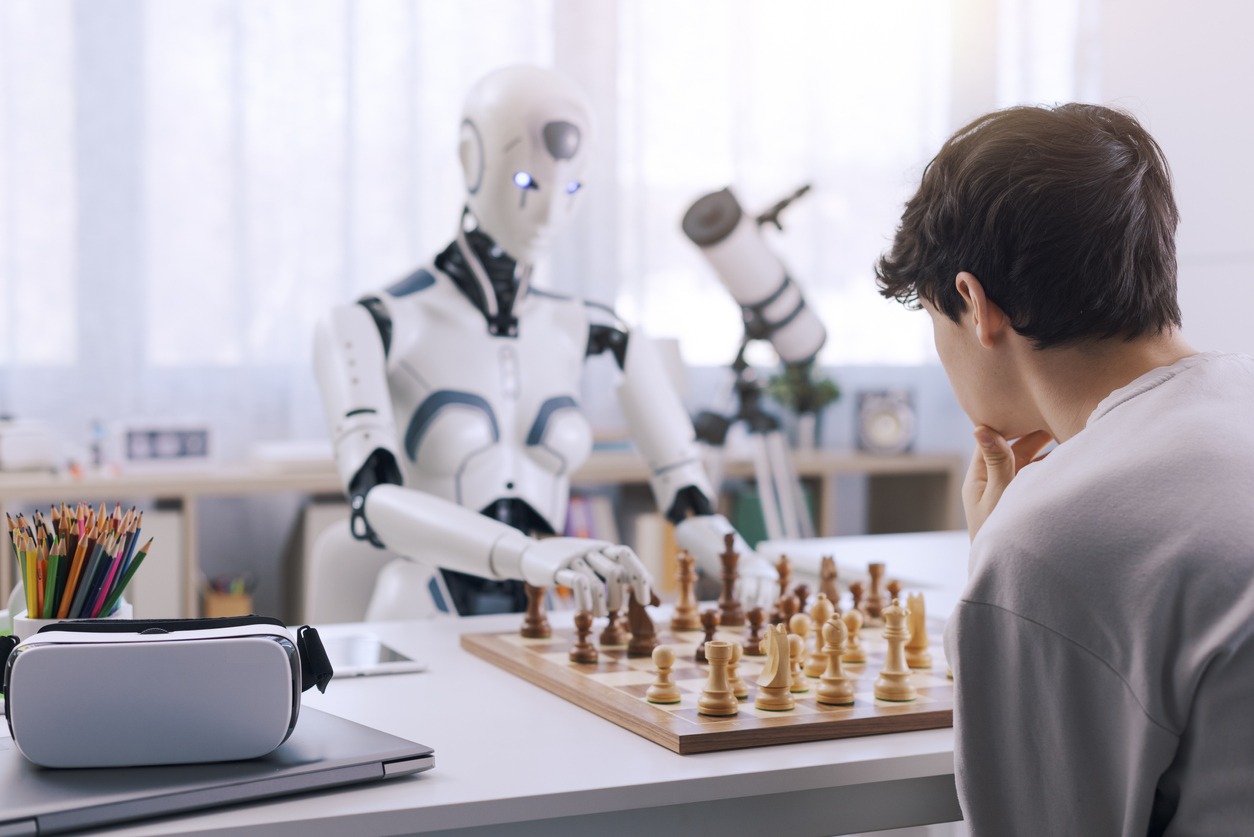Google Ads is a powerful tool that can help businesses of all sizes reach their target audience and grow their business. But the landscape of digital advertising is constantly changing, and businesses need to adapt to stay ahead of the competition.
In recent years, machine learning and automation have become increasingly important in the world of digital advertising. These technologies are enabling businesses to create more effective and efficient advertising campaigns.
How Machine Learning is Personalising Google Ads
Machine learning is a powerful technology that allows Google to personalise ads based on individual user behaviour and preferences. By analysing vast amounts of data, including search history, demographics, and online behaviour, machine learning algorithms can determine which ads are most likely to be relevant and engaging to a specific user.
One way machine learning is personalising Google ads is through dynamic ads. Dynamic ads use machine learning to create custom ads for each individual user based on their recent searches and browsing history. For example, if a user has been searching for running shoes, they may see ads for specific running shoe models or brands they recently viewed.
Another way machine learning is personalising ads is through audience targeting. By analysing user behaviour, machine learning algorithms can group users into similar audiences based on shared characteristics such as interests, behaviours, and demographics. Advertisers can then use this data to target ads to specific audiences with greater precision, increasing the likelihood of engagement and conversions.
Machine learning is also being used to personalise ad formats. For example, Google’s responsive search ads use machine learning to automatically test different combinations of headlines and ad copy to find the most effective combination for each user. Similarly, responsive display ads use machine learning to automatically adjust the size, format, and layout of ads based on the device and context in which they are being displayed.
Overall, machine learning is revolutionising the way Google delivers ads by making them more personalised and relevant to individual users. As the technology continues to advance, we can expect to see even more sophisticated forms of personalisation in the future.
How Automation is Making Google Ads More Efficient
Automation has revolutionised Google Ads by making it more efficient and effective. Here are a few ways in which automation has improved the Google Ads platform:
Targeting
With the help of automation, Google Ads can now target users based on their interests, demographics, and behaviours. This means that advertisers can reach their target audience more efficiently, resulting in higher conversion rates.
Bidding
Automated bidding allows advertisers to adjust their bids in real-time based on the likelihood of a conversion. This ensures that advertisers are getting the most out of their ad spend.
Ad Creation
Automated ad creation tools help advertisers to create more relevant and personalised ads, which can increase click-through rates and conversions.
Reporting
Automated reporting tools provide advertisers with valuable insights into their ad campaigns. This data can help advertisers to make more informed decisions and optimize their campaigns for better performance.
Overall, automation has made Google Ads more efficient by streamlining processes, reducing human error, and improving targeting and optimisation capabilities. This has helped advertisers to achieve better results with less time and effort.
The Benefits of Using Machine Learning and Automation in Google Ads
Machine learning and automation are two powerful technologies that can help businesses improve their Google Ads campaigns. There are several benefits of using machine learning and automation in Google Ads, including:
Improved Targeting
Machine learning algorithms can analyse vast amounts of data and identify patterns and trends that humans may miss. This can help advertisers to better target their audience, resulting in higher conversion rates.
Increased Efficiency
Automation can streamline the process of creating, managing, and optimising Google Ads campaigns. This can save advertisers time and effort and allow them to focus on other aspects of their business.
Enhanced Personalisation
Machine learning algorithms can analyse user data to create personalised ads that are more likely to resonate with the target audience. This can lead to higher click-through rates and conversions.
Better Performance
Machine learning algorithms can adjust bids and ad placements in real-time to ensure that ads are being shown to the right audience at the right time. This can help advertisers to achieve better performance and improve their return on investment.
Data-Driven Insights
Machine learning algorithms can analyse data to provide advertisers with insights into their ad campaigns. This can help advertisers to make more informed decisions and optimise their campaigns for better performance.
Overall, using machine learning and automation in Google Ads can help advertisers to achieve better results with less time and effort. It can also help advertisers to create more personalised and targeted ads that resonate with their audience.
The Challenges of Using Machine Learning and Automation in Google Ads
Although using machine learning and automation in Google Ads can provide several advantages, there are also some challenges that advertisers may encounter. One of the challenges is the complexity of the technology, which may require specialised skills and knowledge to manage. Another challenge is the reliability of data quality, as machine learning algorithms heavily rely on accurate and complete data to make precise recommendations and predictions. Advertisers may also face a lack of control over the campaign, which could be problematic for those who want to have more control over their campaigns.
Additionally, machine learning algorithms can be biased based on the data they are trained on, resulting in ad campaigns that discriminate against certain groups or individuals, which could negatively impact a brand’s reputation. Lastly, machine learning and automation can be costly, making it challenging for small businesses or advertisers with limited budgets. Despite the benefits of using machine learning and automation, it is essential for advertisers to consider the challenges and determine if it is a suitable approach for their business. It is also important to have a good understanding of how machine learning and automation work to ensure that campaigns are optimized and aligned with business goals.
How to Get Started with Machine Learning and Automation in Google Ads
Implementing machine learning and automation in Google Ads can be a highly effective way to optimise your advertising campaigns and achieve your business goals. However, it can be challenging to know where to start if you’re new to the technology. Here are some steps to help you get started:
Understand the Basics
Before you start using machine learning and automation in Google Ads, it’s important to understand the basics of the technology. This includes understanding the algorithms that are used, the types of data that are required, and the factors that can affect performance.
Define Your Goals
Determine what you want to achieve with machine learning and automation in your Google Ads campaigns. This could be improving your ad performance, reducing your costs, or achieving a specific conversion rate.
Identify the Right Tools
There are several machine learning and automation tools available for Google Ads, including Google’s automated bidding strategies, machine learning algorithms, and third-party automation tools. Choose the tools that are best suited to your business needs and budget. Collect and Organise Data: To use machine learning effectively, you’ll need to have accurate and complete data. Collect and organise your campaign data so that it can be easily analysed and used to create machine learning models.
Set Up Experiments
Use Google Ads experiments to test different machine learning and automation strategies. This will help you determine which strategies are most effective and enable you to optimise your campaigns accordingly.
Monitor and Refine
Continuously monitor your campaign performance and refine your machine learning and automation strategies to ensure that they are aligned with your goals. This will help you stay on top of any changes in performance and adjust your campaigns as needed.
Seek Expert Help
If you’re new to machine learning and automation, consider seeking help from experts or taking training courses. This will help you better understand the technology and ensure that you’re using it effectively.
The future of Google Ads is bright with the increasing prominence of machine learning and automation. These technologies are poised to play an even more significant role in shaping the future of digital advertising. By embracing machine learning and automation, businesses can position themselves for success in the ever-evolving landscape of online advertising. With continuous advancements in these technologies, the potential for achieving advertising goals and staying ahead in the competitive market becomes even more promising.



















